
Social Milestones
Learn the social milestones that children reach between birth and six.
Positive relationships with caring adults in the first few years of life have a huge impact on the areas of the brain responsible for social development. As kids form familiar, supportive connections with caring adults, their brains are also forming connections that will help them learn to cooperate and manage their behaviors. And with these important skills, they can build strong, healthy relationships with others.
Birth to age two: From the earliest days of making eye contact with others and copying their expressions, babies’ brains are making connections that help with communication, and they’re learning the building blocks for developing relationships. From 3–6 months, they may try to get adults’ attention by smiling and watching faces closely. As they approach age one, they may become clingy or show anxiety with new people or new situations—signs of their strong attachment.
You can:
- Show children unconditional love by hugging, holding, and comforting them.
- Physically be there to help kids feel safe and secure.
Two-year-olds’ independence may begin to shine through as they become able to share their needs (“I’m hungry, Daddy.”) As they see that they can make things happen by how they communicate with you, they may make their opinion known by often saying “no”! As they near age three, children may become more interested in playing with other kids. Playing helps grow the parts of the brain that help children understand relationships, and it also helps them make connections about the world around them.
You can:
- Make sure there are lots of things to play with during play dates to avoid sharing issues.
- Encourage independence by assigning simple helping jobs, like cleaning up toys.
Three-year-olds are becoming more interested in making friends and may have an easier time separating from caregivers. With practice, developmental milestones for three-year-olds will be reached as their brains become wired to wait, which helps them be patient and “bounce back” when things don’t go their way (but only sometimes!).
You can:
- Have pretend conversations with stuffed animals to practice ways to make new friends.
- Play games such as I Spy, which help pass the time and make waiting more fun.
Four-year-olds: As they begin to understand what others are thinking and feeling, they may suggest solutions to problems, such as taking turns when two friends want to use the same toy. Children will also start figuring out creative ways to play with others (for instance, when seeing others playing with a cardboard box, she may say, “Let’s pretend we’re going to space in a space ship!”).
You can:
- Use an egg timer to help children learn turn taking.
- Play pretend with stuffed animals to model problem-solving strategies between friends.
Five- and six-year olds will still need help in social situations, but may begin to make some compromises and solve everyday conflicts by themselves! (“You can use the red marker now and I’ll use it after you.”) They may also seem to know their own needs a little better (such as feeling cold and putting on a sweatshirt).
You can:
- Help children learn to dress themselves. Talk about the weather and what clothing is needed to be comfortable.
- Talk about how friends have similarities and differences, and that’s okay!
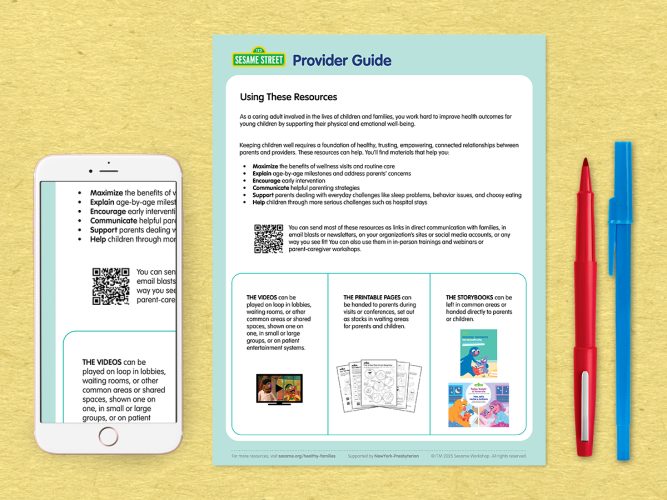
For Providers: Using These Resources
Print and refer to this page as you implement the materials in this initiative.
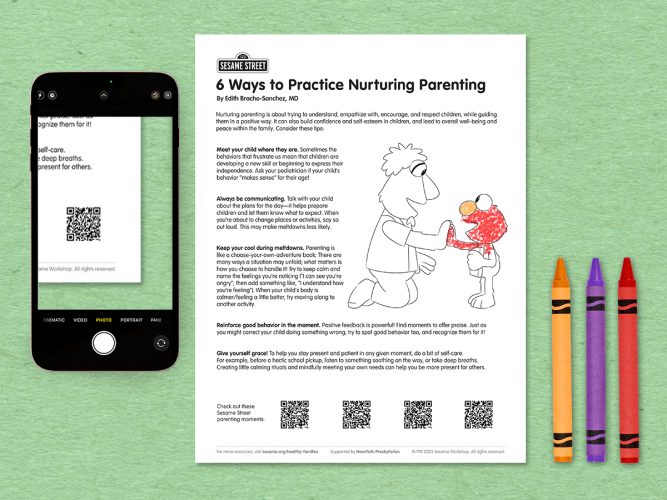
6 Ways to Practice Nurturing Parenting
Tips from a pediatrician on understanding, empathizing with, encouraging, and positively guiding children.

Toddler Tips: Meltdowns
Strategies for during and after a meltdown…and even some ways meltdowns might be avoided.
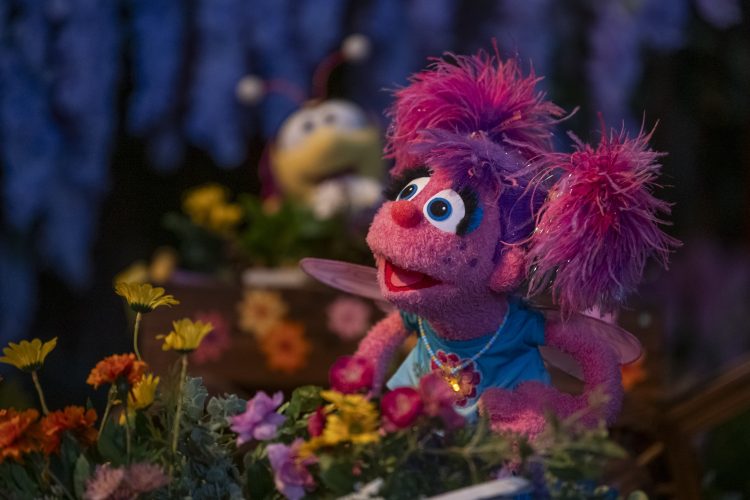
Watch and Play: Abby's Magical Beasties
Watch this episode and explore ways to extend the learning at home.
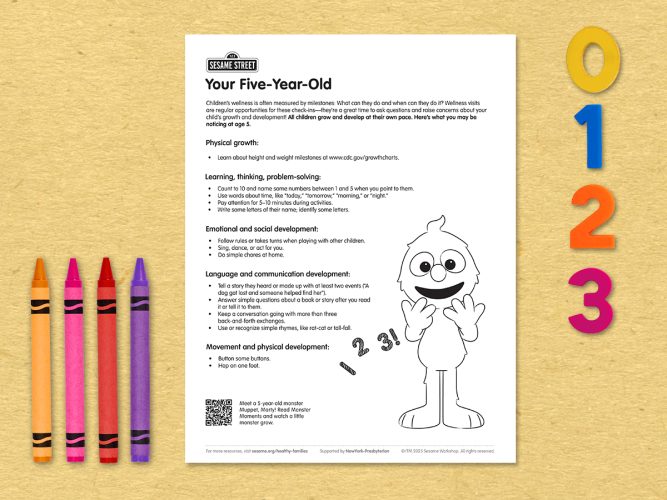
Milestones: Your Five-Year-Old
All children grow and develop at their own pace; use this chart to guide your expectations and observations so you can talk to your child’s pediatrician about questions or concerns.
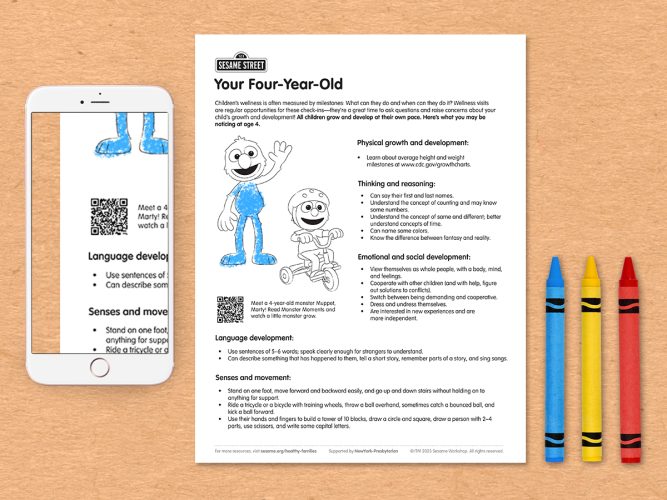
Milestones: Your Four-Year-Old
All children grow and develop at their own pace; use this chart to guide your expectations and observations so you can talk to your child’s pediatrician about questions or concerns.
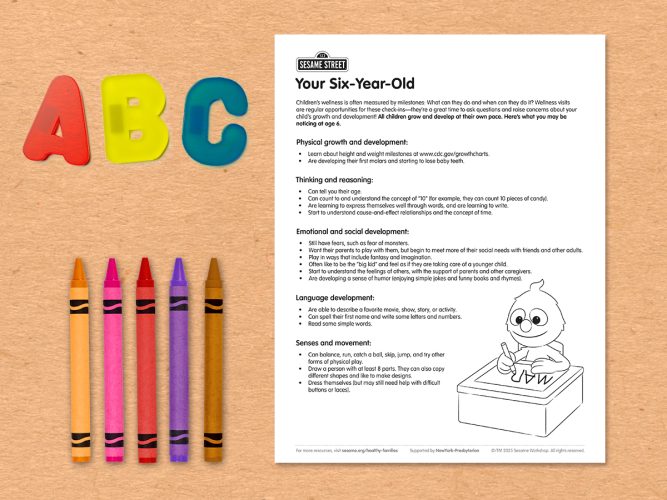
Milestones: Your Six-Year-Old
All children grow and develop at their own pace; use this chart to guide your expectations and observations so you can talk to your child’s pediatrician about questions or concerns.
